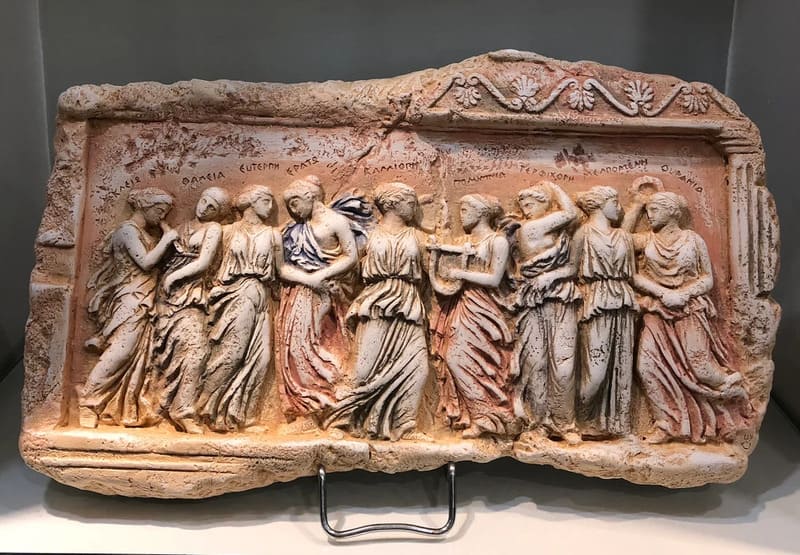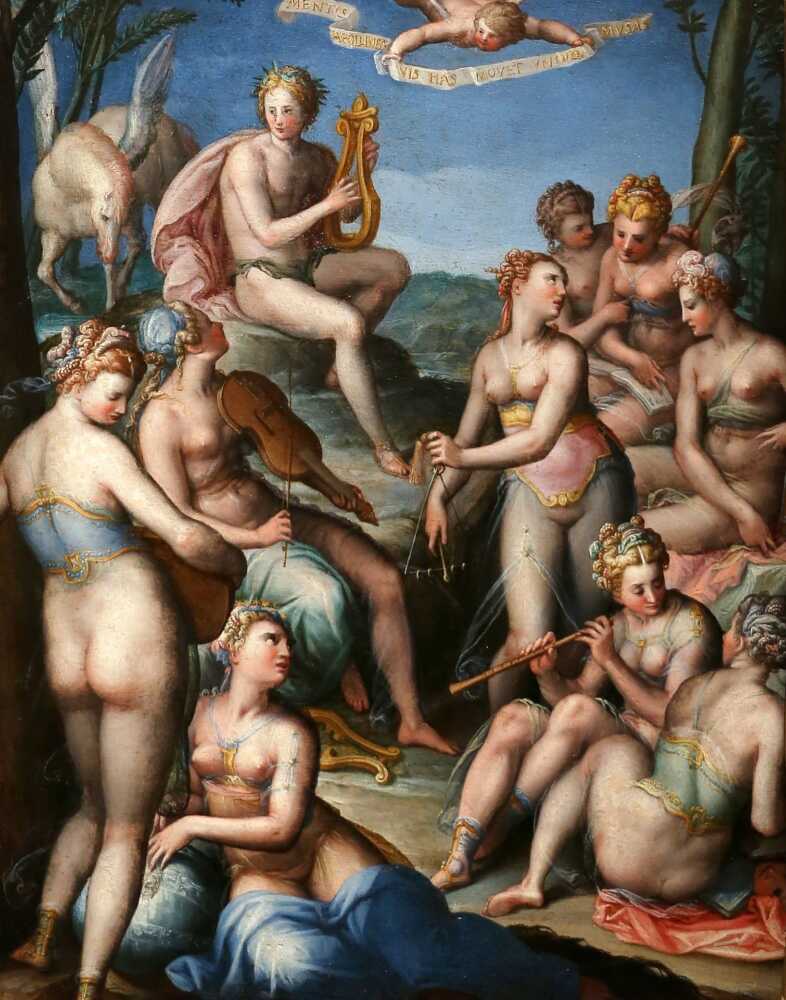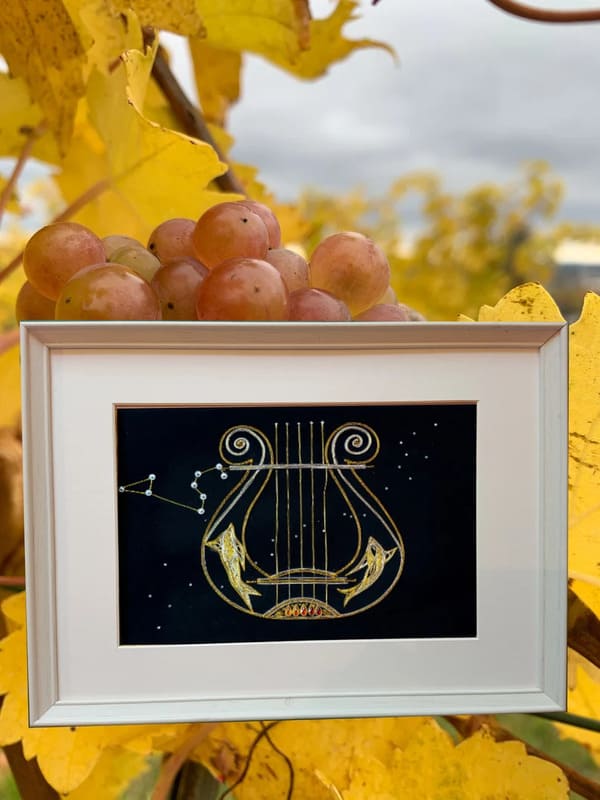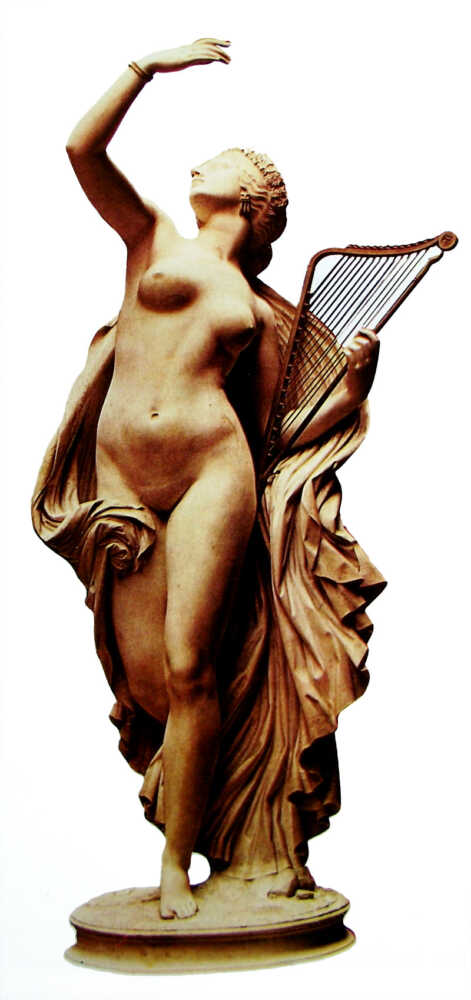The Greek Muses
In Ancient Greece, the great divinities that existed could be counted by dozens, but there were not only goddesses but also what we know as muses.
Who were the muses?
The Muses were also divinities, but not with as much power as the goddesses. According to the scholars of that time, the muses were the most important inspirers there were, inspiring music, love, art, science, poetry, etc., which made them key pieces for these issues, especially at a time of the history in which these aspects had so much value before society.
At first they had an indeterminate number, although finally there were nine unique muses for all of Greece and it was Hesiod who gave them the name with which they would be publicly recognized throughout the Greek empire.

It must be said that these nine muses were born from nine continuous nights between one of the Titanides, Mnemosyne, and the god of gods, Zeus, so the muses are her granddaughters.
On many occasions, they were represented as the singers of the festivals of the gods, but they also accompany the kings, helping them to use the necessary words to be able to govern.
Who were the Greek Muses?
The greatest of the muses is Calliope, the one with the beautiful voice. She was the muse of eloquence, beauty, and epic poetry. She was depicted with a stylus and writing tablet and many legends present her as the mother of Orpheus and Linus, although other historians think that the nature of these muses was completely virginal.
Clio was the muse of history. They say that it was this muse who introduced the Phoenician alphabet in Greece. In addition, she is also mentioned as the mother of Hyacinthus, companion of Apollo. She is depicted with a scroll.
Erato is the muse of lyrical-love poetry and is represented in various works with a lyre.
Euterpe, the very pleasant one, is the muse of music, especially that which she plays on the flute. Precisely this muse is credited with the invention of the double flute, an instrument with which she is represented.
Melpomene is the music of tragedy. Therefore, she is represented with a knife in one hand and the tragic mask in the other.
Polyhymnia is the muse of sacred songs and sacred poetry. She is represented in a meditative attitude, with a very serious countenance. On occasion, she can be depicted with her finger over her mouth, thus symbolizing silence and discretion.

Terpsichore, she who delights in dance, is the muse of dance and choral poetry. In some legends she is treated as the mother of the sirens.
She talía she was the muse of comedy and bucolic poetry. In the representations she appears with the comedy mask and the shepherd’s crook.
Urania is the celestial muse, the muse of astronomy, didactic poetry and the exact sciences. In the representations of her, she appears with a sphere in her left hand and a spike in her right, in addition, she is dressed in a mantle covered with stars.
Samsung Store – Smartphomes & Appliances
The Muses are part of Apollo’s entourage and perform as singers at the festivals of the gods. The first of all their songs was the one they sang when the gods of Olympus defeated the Titans. In addition, it is also often said that they are in charge of accompanying the kings, thus inspiring the exact words and attitudes necessary to govern.
Legends of the muses
It is said that King Piero of Pieria, in Thrace, had nine daughters with great gifts for singing. His art was so beautiful that they decided to travel to Mount Helicon, where the muses lived, and challenge them. The muses gladly accepted.
When the nine girls began to sing, all the birds fell silent. His song was so beautiful that nature fell silent. Then it was the turn of the muses and when they sang their song, even the stones wept. Having won the competition, the muses decided to turn the nine young women into magpies to punish their pride.

The muses had no equivalent in Ancient Rome
The Camenas were mistakenly identified with the Muses of Greek mythology, probably because of their similar pronunciation to carmen, “song”, being in Roman poetry camena synonymous with muse; but it is worth clarifying that the role played by the Camenas had nothing to do with poetic inspiration. The only link that could be established between the Muses and the Camenas are the springs: The Camenas are naiads that inhabited only the Porta Capena spring, and the Muses are generally associated with various springs that provide poetic inspiration. There is no other nexus that links them.
In Roman mythology, the Camenas (Latin: Cămēnae) were the naiads that inhabited the springs, wells, and fountains near Porta Capena, in Rome. These water nymphs were wise and sometimes made prophecies about the future. There is no evidence that the Camenas enjoyed a general public cult, however they must have been the object of private oracular cults of a rather local nature in the chapel located near the Porta Capena fountain and whose surrounding forest was also consecrated to these nymphs.

Chambers, Muses and Fertility
They were considered givers of fertility (basically due to the popularity enjoyed by the waters of said source), which is why they were thought to be protectors of brides as future mothers.
According to tradition, there were four Camenas: Carmenta or Carmentis, Egeria, Antevorta and Postvorta. They were worshiped in the sacred forest known as Porta Capena, near Rome. Carmenta was chief of the nymphs, the spring and grove outside Porta Capena being dedicated to her.
The Camentalia
On their festivity, the Carmentalia, which was celebrated on January 11 and 15, the Vestal Virgins drew water from that spring for rituals. Egeria, for her part, favored Numa, the second king of the Romans, whom she advised through secret interviews, giving him the wisdom with which she expanded and prospered his kingdom. After Numa’s death, the nymph languished and became a fountain.
It is known from the Extended Servius that libations were offered to the Camenas. It is thought that the offering of milk was the most usual for any divinity of fountains and springs; however, it is known that Marcial sacrificed a virgin sow in the fountain of his friend Estela and Horacio (C.III, 13) offered a kid in the fountain of Bandusia; Ovid himself narrates (Fast.III,300) that Numa sacrificed a sheep to the fountain from which Pico and Fauno drank, so the milk offering would be specific to the Camenas










